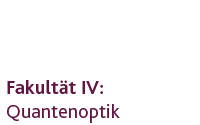Cooling Techniques for Trapped Ions
Cooling Techniques for Trapped Ions
References: [QIS40]
We give an introduction to, and an overview of, methods for cooling trapped ions. The main addressees are researchers entering the field. It is not intended as a comprehensive survey and historical account of the extensive literature on this topic. We present the physical ideas behind several cooling schemes, outline their mathematical description, and point to relevant literature useful for a more in-depth study of this topic.
Enhancement of laser cooling by the use of magnetic gradients
References: [QIS27]
We present a laser cooling scheme for trapped ions and atoms using a combination of laser couplings and a magnetic gradient field. In a Schrieffer–Wolff transformed picture, this setup cancels the carrier and blue sideband terms completely (up to first order in the Lamb–Dicke parameter), resulting in an improved cooling behaviour compared to standard cooling schemes in the Lamb–Dicke regime (e.g. sideband cooling) and allowing cooling to the vibrational ground state. A condition for optimal cooling rates is presented and the cooling behaviour for different Lamb–Dicke parameters and spontaneous decay rates is discussed. Cooling rates of one order of magnitude less than the trapping frequency are achieved using the new cooling method. Furthermore, the scheme exhibits fast rates and low final populations, even for significant deviations from the optimal parameters, and provides good cooling rates also in the multi-particle case.
Simultaneous cooling of axial vibrational modes in a linear ion trap
References: [QIS16]
In order to use a collection of trapped ions for experiments where a well defined preparation of vibrational states is necessary, all vibrational modes have to be cooled to ensure precise and repeatable manipulation of the ions' quantum states. A method for simultaneous sideband cooling of all axial vibrational modes has been proposed: By application of a magnetic field gradient the absorption spectrum of each ion is modified such that sideband resonances of different vibrational modes coincide. The ion string is then irradiated with monochromatic electromagnetic radiation, in the optical or microwave regime, for sideband excitation. This cooling scheme has been investigated in detailed numerical studies. Its application for initializing ion strings for quantum information processing has been evaluated. This work was done in collaboration with the theory group in Ulm and Barcelona.
